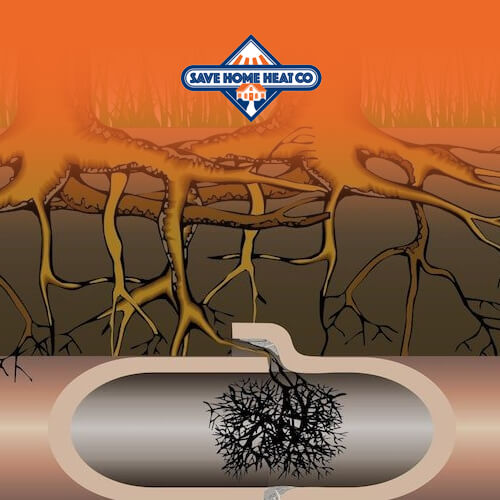Beware Tree Root Intrusion on Your Sewer Line!
 When you drain a sink, or the dishwasher or washing machine, or any other plumbing appliance around your home, you expect the wastewater to be down the drain and out of your life for good. A well-maintained drain system should serve your home fine for many years.
When you drain a sink, or the dishwasher or washing machine, or any other plumbing appliance around your home, you expect the wastewater to be down the drain and out of your life for good. A well-maintained drain system should serve your home fine for many years.
If you have an older home, in particular, if your home was built before 1980, the sewer line running below your lawn could be made of clay. Given the natural tendency for clay to slowly deteriorate, over time, the stage could be set for significant issues that could affect plumbing around your entire home. Enter springtime, outdoor growth spurts, and trees looking for water and food with their root systems.
Must-Know Info About Your Sewer Line
All of the drain lines in your home converge into one main sewer line that travels out of your house. It meets up with the city line underground near the edge of your property.
Because the sewer line runs below ground, developing issues could go undetected for a long time. As a homeowner, that pipeline, as it runs across your property underground, is technically your property and your responsibility to maintain and repair. At the point where this pipe joins with the city main, your responsibility ends. As a responsible homeowner, you should know where this line is located, and you should start thinking about routine inspections.
Tree Roots and Your Home’s Drain System
Depending on the type of species, tree roots may extend far and wide underground in their search for sources of water and nutrients. A compromised sewer line can be a magnet for tree roots, especially during springtime. Once the roots enter your sewer pipe, serious drain issues could develop.
>>It’s worth noting that newer sewer lines, often made of iron, steel, or ABS or PVC plastic, could also become a target for nearby tree roots.
Small sewer line cracks or holes could be the result of:
- Shifting ground
- Deteriorating older piping
- Suspect pipe material, such as clay
- Age, or other factors creating a weak section on the outside surface of the sewer line, which is then enlarged by rodents – with the unwanted ‘bonus’ of possible rodent intrusion (along with a host of insects) into your home thru the drain lines!
Tree roots can turn a small pinhole in an underground drain pipe into a significant and growing breach. The result could be some or all of your home’s wastewater draining out underground, on your property, as well as significant blockage of the sewer pipe with roots. The effect on your home could be the backing up of all drains, in floors, sinks, showers, washers, etc. Not a pretty worst-case scenario picture.
Signs of a Problem
If tree roots are invading your sewer line, you might initially notice that lower-level drains or toilets in your house start backing up or gurgling. Funky smells from the drains and basement, possible seepage through the foundation floor or walls, and potential mold growth in the basement could accompany a sewer line breach.
Outdoors, the grass might grow faster and greener near a broken sewer line. The ground could sink in places, and you might notice smelly standing water where there shouldn’t be any. This last symptom – the smelly part – could help differentiate between a possible sewer line or sprinkler issue.
I’d like to schedule a sewer line inspection!
How to Avoid a Crisis Situation
Developing issues with the main sewer line could potentially go undetected for a significant period of time. By the time these symptoms become obvious and in need of immediate attention, you could be looking at a bigger problem and a more costly fix than might have been the case a few years back. Regular inspection by a home drain specialist, using a sewer line inspection video camera, can help provide the peace of mind that you’re being proactive in helping to identify what could become a major drain issue, while still in the early developing stage.
Some Thoughts About Trees
If you have the option of choosing your trees, or you have a plentiful number and are considering doing some thinning, here are some thoughts to help guide you. Certain types of trees, such as dogwoods, cherrywood, or Japanese maple, have less intrusive roots systems and would be a good call to locate near your underground sewer line. We’re guessing there may be other species available, along with shrubs such as holly or azaleas, whose root systems are also compatible with sewer lines. Of course, your local nursery can be a great source of assistance in recommending trees or shrubs that would be a great fit for your property. A couple of trees with notably ‘notorious’ reputations, that you should be extra cautious about if located near your sewer line, are elms and willows.
It makes good sense to have a respected plumbing company perform regular inspection of your sewer line, and at the same time check all the secondary drain lines in your home. In the Denver-Boulder area, Save Home Heat Company provides expert residential drain services, along with comprehensive heating, cooling, electrical, and plumbing assistance.
I need help with an issue I’m experiencing with my home
Tags: Sewer Line



